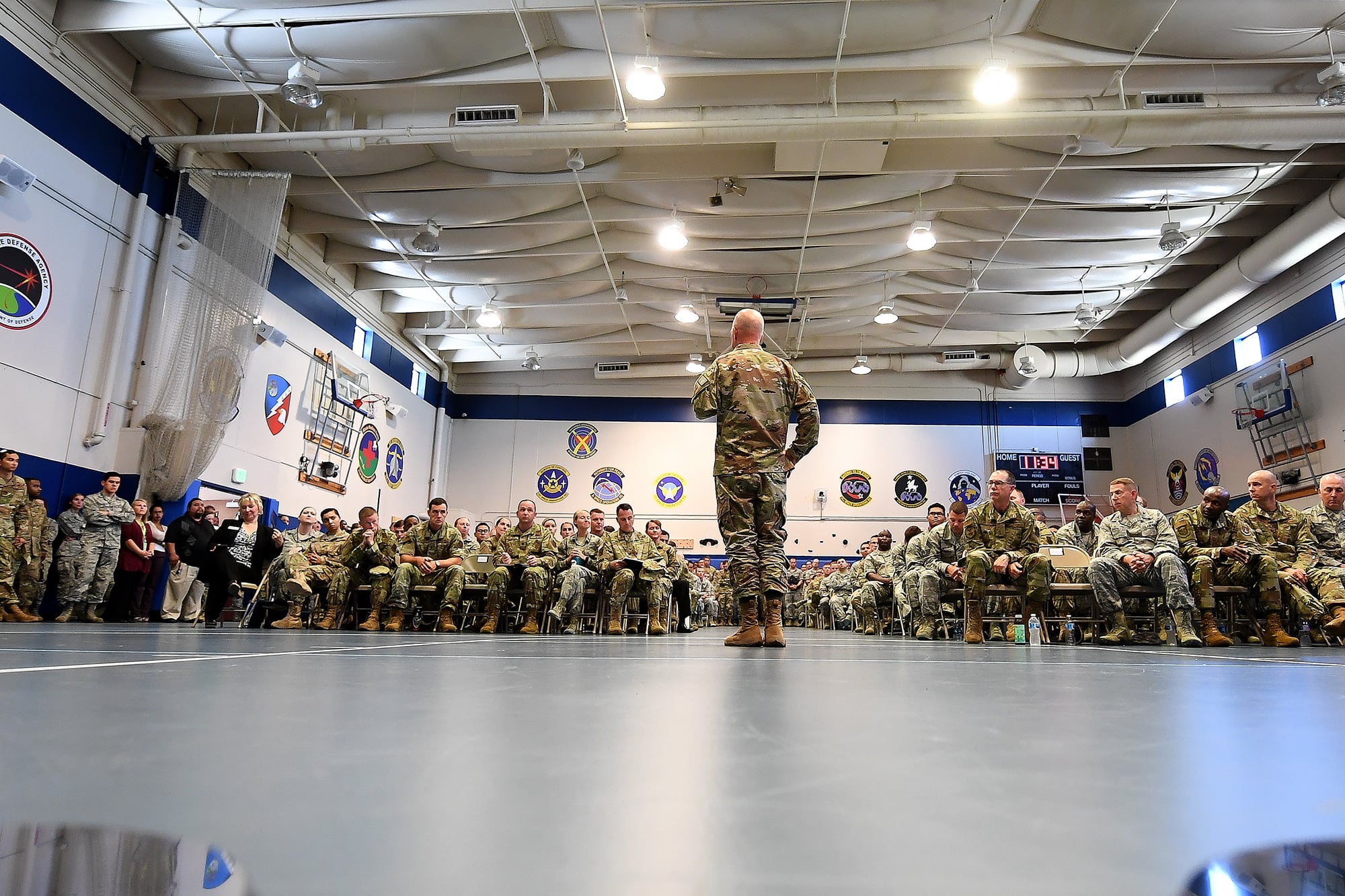The decision to move U.S. Space Command should be thoroughly investigated and allow senior military leadership to identify the best location to support a critical national security mission
When the Department of Defense and the Air Force announced in January that Huntsville, Alabama, had been chosen as the permanent location for U.S. Space Command, the 11th combatant command, I was surprised and disappointed. More so when I read the recent reports of the Air Force’s ratings of Peterson Air Force Base, as middle or bottom third relative to the six finalists in several categories.
As a former commander of North American Aerospace Defense Command and U.S. Northern Command — both at Peterson — I know firsthand the community and base support at Peterson is second to none. Every day they meet the highest standards required by a combatant command.
One of the most glaring errors of the Air Force report is the low ranking for “enable mobility,” a category described as proximity to an airfield and ability to support distinguished visitor travel. Peterson AFB shares its runways with Colorado Springs Airport, providing two parallel runways of over 10,000 feet in length and a third of nearly 8,000 feet.
Peterson is the second busiest DV airport in the Department of Defense, including frequently hosting Air Force One. It is surprising that any location beat Peterson in this category. It is also home to four major airlines and two “destination” carriers, with service to major hubs from the East to the West Coast. The airport is rarely closed down for weather, even when Denver closes for heavy snow. The airport provides quality investment incentives for both commercial and general aviation users, and it is home to numerous international shippers.
The security and emergency response requirements for a combatant command are more stringent than for other military units. When I was the commander, the base and the community always surpassed our requirements. Even now, the base is very pleased with the community’s support, and there are no security or response concerns. In fact, the city and state have taken initiatives to further enhance that security, such as base access improvements, highway improvements and securing standoff distances. Most DoD installations do not meet the same standards as those which secure a combatant command. I would trust a location that has been doing it superbly for over 30 years.
Communications and energy resilience are other areas where no other location comes close to Peterson. Colorado Springs has a unique, survivable, multiple alt-routed fiber network designed specifically for the space enterprise, and the city and county have invested millions in power and water improvements to support the DoD. Recreating this in Huntsville will cost several million dollars and take years to build. Doing without it could leave the combatant commander completely isolated in a conflict. Responsible for the security of national infrastructure, I never had a concern for the energy resilience of Peterson AFB, and notably, Colorado Springs Utilities has a resiliency rate in the top 1 percent in the country.
Medical support is important for all commands. Colorado Springs is home to four major medical systems, the largest Tricare network west of the Mississippi River, and six hospitals, including Children’s Hospital Colorado, rated among the top 10 in the country. I served for more than seven years as board president for UCHealth Memorial Hospital and board member of the parent health system, UCHealth — Colorado’s largest health care system and provider to more Tricare patients and Medicare/Medicaid patients than any other in the state.
Throughout my Air Force career, I experienced many locations where service member assignments were restricted due to the community’s lack of support capacity. There is no care that is not available in the Colrado Springs area and many specialties are rated in the top 10 in the nation. Additionally, the Intrepid Fallen Heroes Fund is planning an Intrepid Spirit Center in Colorado Springs for the treatment of military personnel with traumatic brain injury and post-traumatic stress.
RELATED

Keeping Space Command in its current facility significantly reduces costs, it also keeps the headquarters in close proximity of critical mission partners NORAD, NORTHCOM, the Space Force’s Space Operations Command, the National Space Defense Center, and eight of the Space Force’s nine Deltas. Furthermore, Colorado has over 500 space-related companies and suppliers, and the highest concentration of aerospace employees in the country.
Based on my experience, Peterson provides expert support to a combatant commander in every way. Since 1985, Colorado Springs has hosted three 4-star headquarters, including at least one, and currently two combatant commands. That support has always been outstanding and an enhancement to the mission! U.S. Space Command has a good home now. Any process that claims Colorado Springs has shortfalls supporting a combatant command is certainly flawed. I applaud the Defense Department’s review of the process and urge Defense Secretary Lloyd Austin to thoroughly investigate all the options and allow senior military leadership to identify the best location to support a critical national security mission.
Retired Air Force Gen. Gene Renuart was the commander of NORAD and U.S. Northern Command at Peterson AFB from March 2007 to July 2010. He is the founder and president of the Renuart Group.





